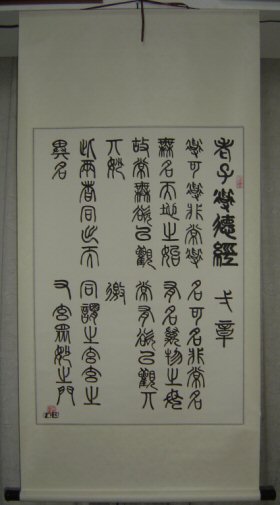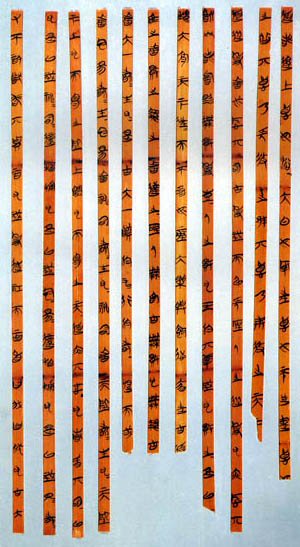Philosophical Daoism: Main Scriptures
- Dao De Jing : Written supposedly by Lao Zi (81 chapters often divided into two parts)
- Book of Dao : Chapter 1-37
- Book of De : Chapter 38-81
- Zhuang Zi : Written supposedly by Zhuang Zi (inner chapters) and others (misc and outer chapters)
- Inner Chapters
- Outer Chapters
- Miscellaneous Chapters
- Hua Hu Jing: Unknown author (81 chapters)
- Lie Zi: Written supposedly by Lie Zi (111 chapters)
History: Dao De Jing
In late 1973, two copies of the text was discovered in a tomb that was sealed in 168 BC in a suburb of the provincial capital of Changsha known as Mawangtui. The Mawangtui texts contain numerous omissions and errors and need to be used with great care, however.
Another text dates from the same period at another tomb sealed shortly after 200 BC. This tomb was located near the Grand Canal town of Hsuchou and was opened in 574 AD. Not long afterward, the court astrologer Fu Yi published an edition of the copy of the Dao De Jing that was found inside.
In addition to the Mawangtui and Fuyi texts, there are also more than sixty copies of the text that were found shortly after 1900 in the Silk Road oasis of Tunhuang. One of them was written by a man named Suo Tan in 270 AD, providing yet another early hand-written edition.
Another copy is from the great fourth-century calligrapher Wang Hsi-chih
Finally, the text appears in early commentaries of Yen Tsun, Ho-shang Kung, and Wang Pi (not to mention numerous passages quoted in the ancient works of Mo-tzu, Wen-tzu, Chuang-tzu, Lieh-tzu Han Fei, Huai-nan-tzu, and others).
Adapted from Red Pine's Tao Te Ching

Note that at the time the Tao Te Ching was written, the predominant type of Chinese characters in use was the Zhuan Shu style. You can see chapter 1 of the modern Dao De Jing in this Seal Style in the scroll at the left. Read more about: Daoist Chinese Character calligraphy styles |
Guodian Tao Te ChingIn 1993, an astonishing discovery was made at a tomb in Guodian in Hubei province (east central China). Written on strips of bamboo that have miraculously survived intact since 300 B.C., the "Guodian Laozi, " is by far the earliest version of the "Tao Te Ching" ever unearthed. There were three bundles of bamboo strips (71 strips total), and they contained only chapters 1 to 67 of the modern Dao De Jing.
|
 Back to Daoism Depot
Back to Daoism Depot